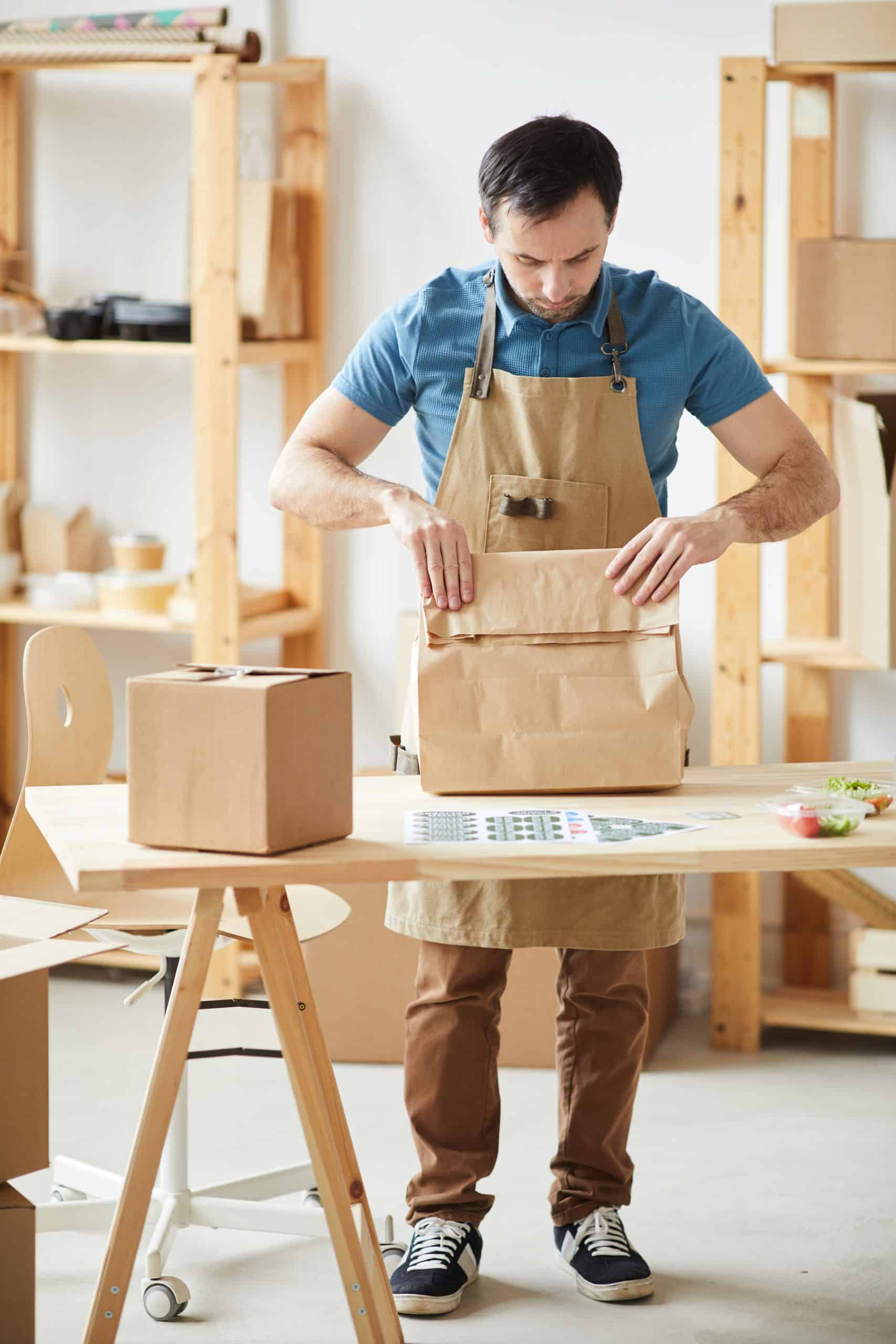How to Create Packaging That Stands Out in the Competitive UK Food Market?

As a business in the ever-vibrant and fiercely competitive UK food market, creating an identity for your brand is not just about having a catchy name or logo. It also revolves around creating a unique and eye-catching packaging design that resonates with your target consumers. Packaging is the first physical contact customers have with your product. It is a tangible embodiment of your brand’s personality and values, which can significantly influence a consumer’s buying decision.
The key is to understand that a well-packaged product can make your brand stand out on the shelves, appeal to consumers, and ultimately increase sales. This article lays out a guide on how you can create a packaging design that will make your food product shine in the competitive UK food market.
Also to discover : What Tactics Can UK Real Estate Agents Use to Sell Properties Faster?
Understanding the Importance of Packaging in Marketing
Packaging is an integral part of the marketing process. It is more than just a protective layer for the product. It has evolved into a powerful marketing tool that communicates the value of your brand and product to consumers.
Good packaging design is essential in influencing the consumer’s buying behaviour. It can attract potential customers, provide information, reinforce brand identity, and create a memorable unboxing experience. Moreover, in the food industry, packaging also plays a crucial role in ensuring the safety and freshness of the food products.
In the same genre : How Can UK Small Businesses Use Augmented Reality for In-store Promotions?
As a company, you should invest in creating custom packaging that not only appeals to the senses of your consumers but also conveys your brand’s personality and values. This would make your product more attractive and recognizable, giving you an edge over your competitors in the market.
The Design Process: Creating a Unique Packaging for Your Brand
Creating a unique packaging design can be a complex process. It involves understanding your brand, the product, the target customers, and the market trends.
To start with, define your brand’s personality. Is it fun, serious, traditional, innovative or quirky? The packaging should mirror this. Next, consider the product and its unique selling points. Highlight them in the design.
Knowing your target customer is critical. Understand their preferences, lifestyle, and buying behaviour. Create a design that resonates with them. For example, if your target audience is environmentally conscious consumers, consider using eco-friendly materials for your packaging.
Lastly, take into account market trends. What colours, styles, or materials are popular? However, be careful not to lose your brand’s uniqueness by following trends blindly. The goal is to create a balance between standing out and fitting in.
Custom Packaging: An Essential Tool for Branding
Custom packaging is an essential tool for branding. It offers a unique opportunity to showcase your brand’s identity and values. When designed correctly, it can differentiate your products from the competition and increase their perceived value.
When creating custom packaging, consider incorporating your brand’s logo, colours, and taglines. This can create a consistent visual experience for your customers and reinforce your brand identity. Moreover, custom packaging can also enhance the unboxing experience, leaving a lasting impression on the consumers.
The materials and finishes you use in your packaging also matter. They not only affect the overall look and feel of the packaging but also reflect your brand’s values. For instance, using eco-friendly materials can signify that your brand is committed to sustainability.
Incorporating Sustainability into Your Packaging Design
In recent years, sustainability has become a hot topic in the packaging industry. More consumers are now aware of the environmental impact of their purchases, including the packaging of the products they buy. This shift in consumer behaviour has prompted many businesses to incorporate sustainability into their packaging designs.
Sustainability in packaging can involve using eco-friendly materials, reducing packaging waste, or making packaging reusable or recyclable. It’s not just about being environmentally friendly, it also makes good business sense. By adopting sustainable practices in your packaging design, you can appeal to the growing number of eco-conscious consumers and create a positive image for your brand.
In conclusion, creating a standout packaging design in the competitive UK food market is no easy task. It involves understanding your brand, your product, your target customers, the market trends, and the importance of sustainability. However, with proper planning and execution, you can create a packaging design that not only attracts consumers but also makes your brand memorable.
Case Study: Implementing Packaging Solutions for a Strong Brand Identity
In creating an effective packaging design for your food product, it’s helpful to examine successful case studies. As an example, let’s consider a renowned brand in the UK food market that has managed to make its mark through exceptional packaging design.
The brand had a clear understanding of its identity – a strong brand known for offering high-quality, delicious, and healthy food products. Their goal was to communicate this identity and value through their packaging. They knew their target customers valued quality, health, and convenience.
With this information, they hired a design team to create a custom packaging solution. The design process included brainstorming, sketching, prototyping, and testing. They considered various aspects of the product packaging, such as the shape, size, material, colour, and typography that would best represent their brand identity and product value.
They emphasized on creating an eye-catching design that would immediately grab the attention of the consumers. They made sure to incorporate their brand colours and logo consistently across all their packaging designs. They also focused on providing clear and concise information about their food products on the packaging.
One key aspect they considered was sustainability. In line with their target customers’ values, they opted for eco-friendly packaging solutions. They used recyclable materials and minimized packaging waste, which not only helped reduce their environmental footprint but also appealed to their eco-conscious customers.
This case study exhibits how effective packaging design can help a brand stand out in the competitive UK food market, and reinforce a strong brand identity.
Leveraging Packaging Designs in the Food & Beverage Supply Chain
In the food & beverage industry, the relevance of packaging extends beyond the shelf. It plays a pivotal role in the entire supply chain, from production to distribution to retail. Optimal packaging solutions can help maintain product safety, facilitate transportation, and enhance shelf life, thereby reducing food waste and improving the bottom line.
To leverage packaging designs in the supply chain, businesses should take into account factors such as the size, shape, and material of the packaging. For instance, packaging food in sturdy, stackable shapes can help optimize space during transportation and storage. Similarly, using materials that provide adequate protection can maintain the freshness and quality of the food products during transit.
Furthermore, it’s crucial to align your packaging designs with the retail environment. Consider how your product packaging will look on the shelves and how it will interact with other products. Will it stand out? Is the information on the packaging easily readable? Does it provide a good tactile experience?
Lastly, remember to incorporate sustainability into your supply chain packaging solutions. This can involve using materials that are recyclable or compostable, reducing packaging layers, or designing packaging that can be re-used by the consumer. Sustainable packaging solutions not only appeal to eco-conscious customers but also help improve supply chain efficiency by reducing waste and costs.
In conclusion, packaging design is a powerful tool that can help your food product shine in the competitive UK food market. It’s a tangible representation of your brand identity and values, which can significantly attract consumers and influence their buying decisions. Remember, excellent packaging is not just about an eye-catching design, but also about providing practical solutions in the food & beverage supply chain and demonstrating a commitment to sustainability. With careful planning and execution, you can create packaging that makes a lasting impression and drives your brand to success.
